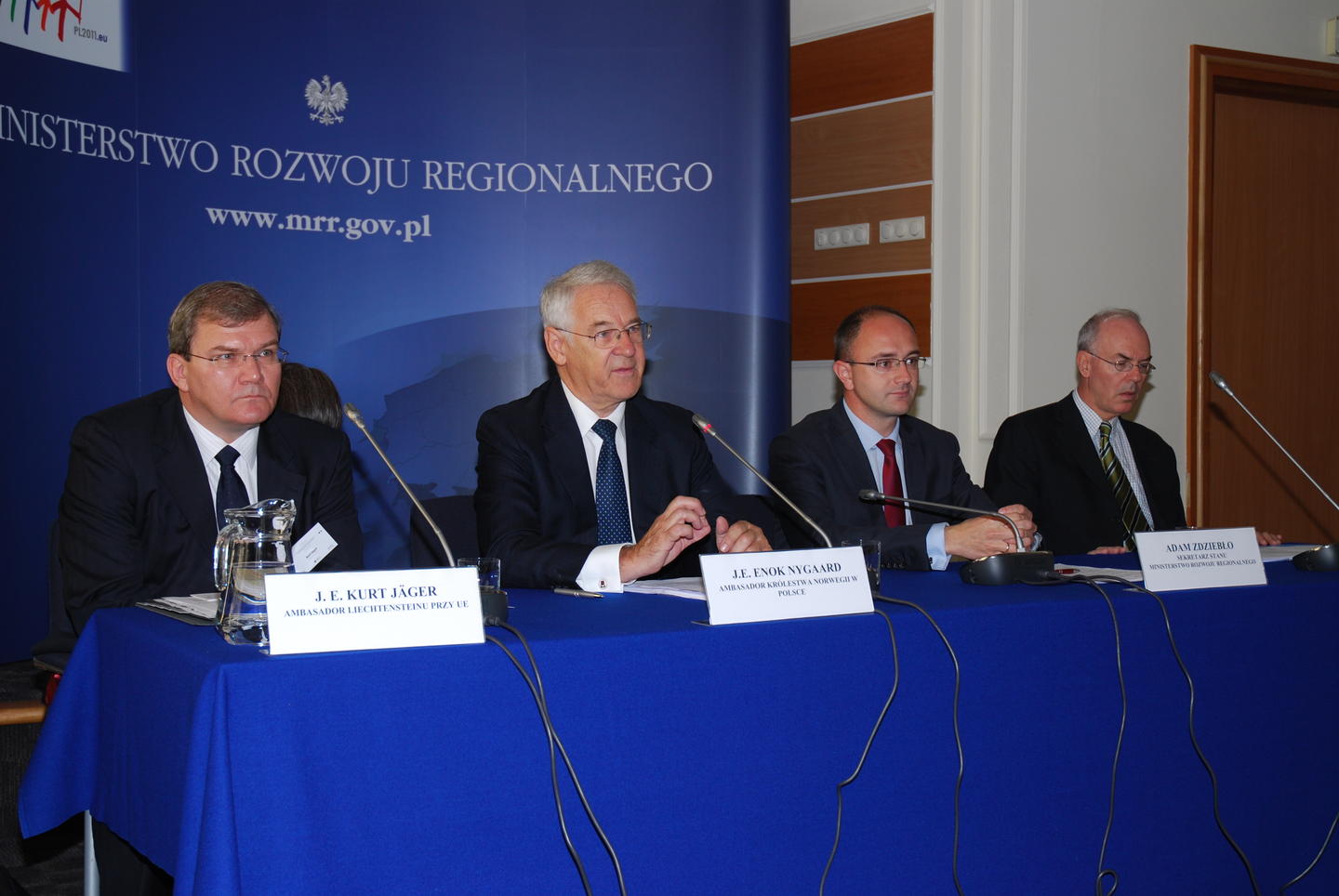Adam Zdziebło, Secretary of State in the Polish Ministry of Regional Development, Enok Nygaard, Ambassador of Norway in Poland, and Kurt Jäger, Ambassador of Liechtenstein to the EU, opened the event.
Successful implementation
Representatives from the Ministry of Regional Development, the Focal Point for the EEA and Norway Grants in Poland, spoke about some of the key achievements and looked towards opportunities under the new schemes.
Anders Erdal, Chairman of the Financial Mechanism Committee, praised the hugely successful implementation of the Grants in Poland. With practically 100% of projects on course for completion, he underlined how the high-quality administrative capacity and efficient programme preparation were key to this success.
Cementing ties
During a round table debate participants discussed how the grant schemes have boosted cooperation between Poland and the donor states. Almost 100 projects included cooperation with a donor-state partner, mainly Norwegian, with extensive linkages also facilitated under the funds.
Key achievements
Priority areas of support included improving environmental conditions and access to health care. More than €51 million was spent on energy efficiency projects in 350 public building – contributing to annual savings of over 150 000 MWh and 70 000 tonnes of CO2 emissions. Upgrades to hospitals and healthcare institutions increased diagnosis and treatment capacity by over 110 000 patients per year.
Poland has the longest external border of any Schengen state, making police cooperation and tackling cross-border crime important. Close to one fifth (€105 million) of the funding was spent on efforts to improve security at 70 border crossings to fulfill Schengen requirements (the largest of these being Terespol on the Belarus border).
Funding also contributed to strengthening cooperation in research, supporting civil society and minority groups and made a substantial contribution to the restoration of many cultural heritage treasures in Poland. These have included architectural landmarks in UNESCO-listed old towns of Krakow and Warsaw.
Photo: Karina Gradowska-Karpińska, Norwegian Embassy to Poland
